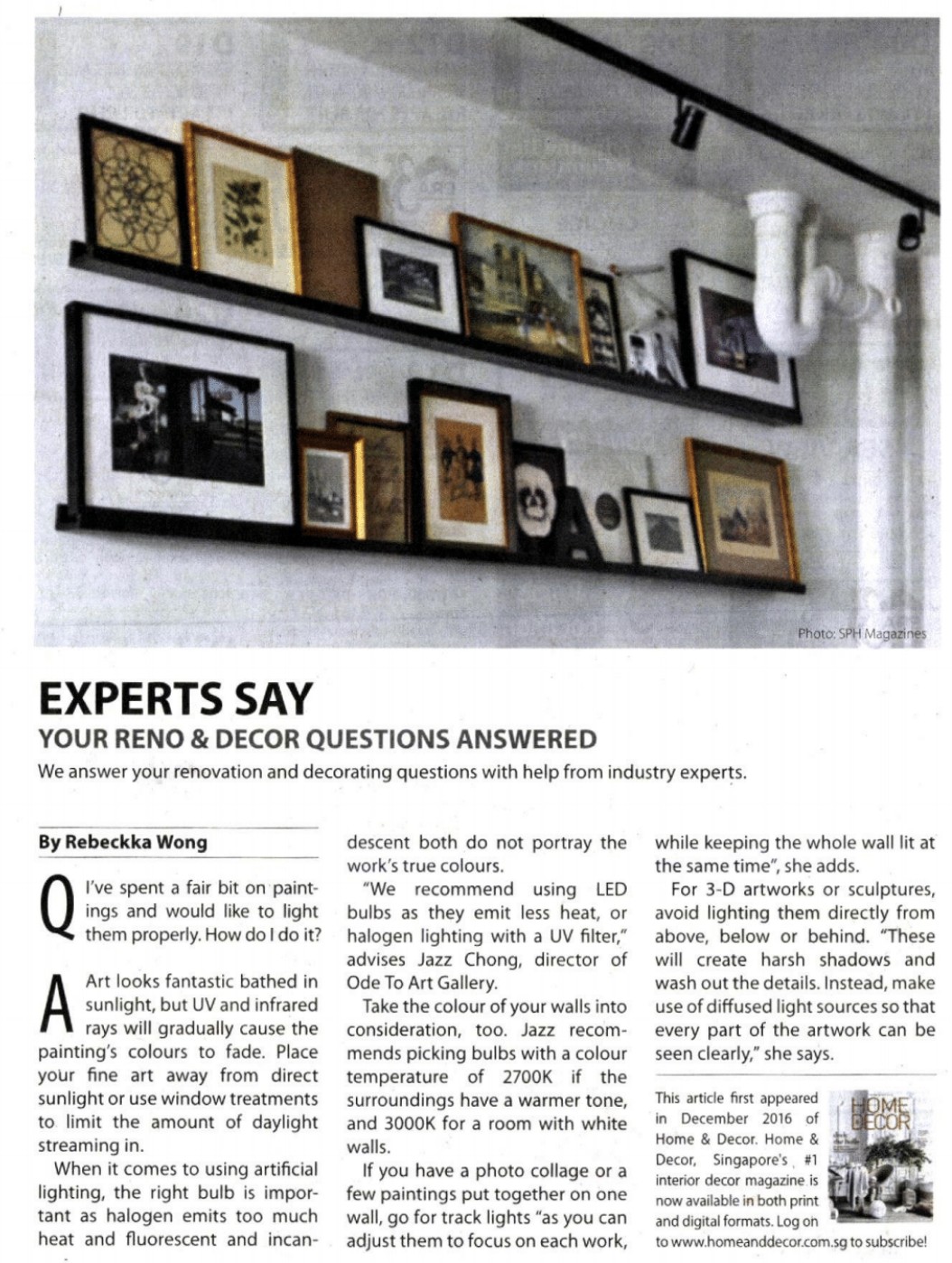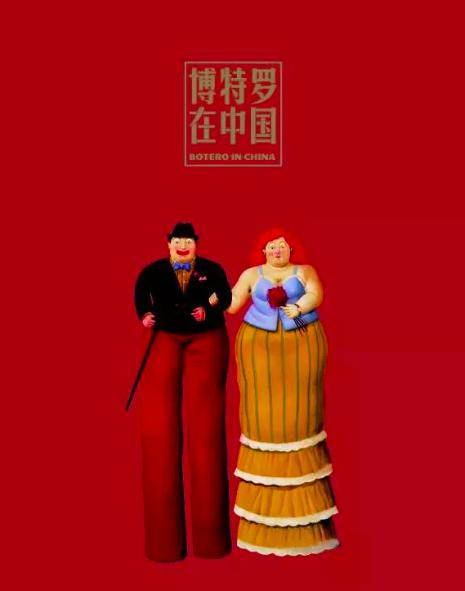All About Artists
Wu Qiong featured on Art China
Wu Qiong’s Solo Exhibition – Here and Now” will open on 8 November 2015 at Ode to Art gallery in Singapore.
By Ode To Art
Here and Now – Wu Qiong Solo Exhibition
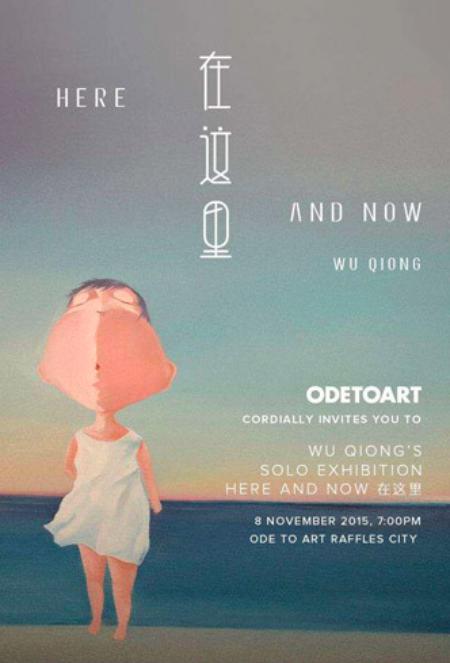

在这里,Here and Now, 2015, print, 70 x 57 cm

Wu Qiong’s Solo Exhibition – Here and Now” will
open on 8 November 2015 at Ode to Art gallery in Singapore. Part of the
“post-80s” generation, Wu Qiong was born in Beijing and studied at the Nanyang
Academy of Fine Arts in Singapore after graduating from Beijing Normal
University. After being represented by Singapore galleries, his work was well
received by the masses and piqued their interest. The paintings of Wu Qiong
have undergone different periods of discovery and exploration, and in recent
years he began using the visual language of pop culture to plumb the depths of
his inner emotions. The main subjects of his paintings began to assume a
“childlike” stance, stemming from recollections of his childhood. He is willing
to immerse himself in the beautiful dreamscapes of his youth, searching for
emotions and reiterating his purest memories. His upcoming solo exhibition in
Singapore will be a showcase of his sculptures, supported by his paintings and
the recent art series that have sprung forth. Through the simple and calming
images, the exhibition will attempt to trigger the reflections that viewers
have towards daily life. The hope is that the works will engage audiences in a
dialogue and lead to ideals or messages that resonate with them.
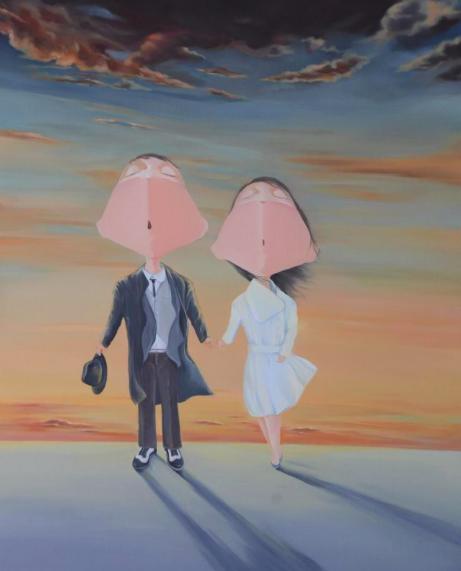
在这里(13)- 永远, Always and Forever, 2015, oil on canvas, 150 x 120cm

在这里(13)- 永远, Always and Forever, 2015, oil on canvas, 150 x 120cm
Wu Qiong was born in
Beijing. Divergent from the ‘post-60s’ and ‘post-70s’ generation, the children
of the ‘post-80s’ generation experienced sweeter and more comforting childhood
years. They were the generation that engaged in traditional games to a large
extent, growing up in the era after Deng Xiaoping enacted policies and reforms
that opened China to the outside world in 1978. Due to his parents being
engaged in advertising and design work, Wu Qiong – who was an only child – was
influenced by art from a young age. He began learning Chinese ink and wash
painting at the age of eight. In 1994, he was accepted into the prestigious Xu
Beihong Arts Institute - which is now known as the School of Arts, Renmin
University of China – where he was trained in Western fine art. In 1998, he entered Beijing Normal University
where he majored in oil painting. In 2003, he left for Singapore to enroll in
the Nanyang Academy of Fine Arts – realizing his desire to go abroad to further
his studies. In the process, he was centered upon his wish of fully
experiencing the culture of a foreign country. It was precisely this sort of
intercultural education background, where he familiarized himself with a
country far from his home, which allowed him to discover himself once more and
deeply ponder his own artistic journey.
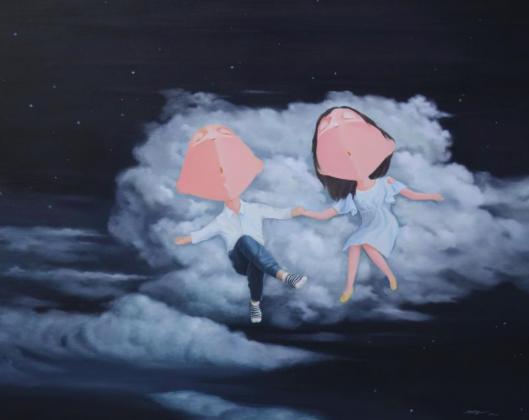
在这里(8)- 梦幻,In the Clouds of our Dreams, 2015, oil on canvas, 120 x 150 cm

在这里(8)- 梦幻,In the Clouds of our Dreams, 2015, oil on canvas, 120 x 150 cm
Wu Qiong’s early
work (2003 – 2006) belong to an exploratory stage of art, presenting a portrait
of his different states of mind at that point in his life. Chinese painter Mao
Yan (born in 1968) influenced his artistic style to a large degree. Wu Qiong’s
graduation show titled “Showcasing the Inner Worlds of Humans,” portrayed the
different mental states of people through oil paintings that mimicked
watercolors, which were rendered in calm and unhurried brushstrokes. He
references his feelings at the time to present the failures of artists, a sense
of unease coupled with a hesitation towards life. In his artwork titled Crying and Screaming, the character
spirals downward into hysterics and crawls along the pavements of darkened
streets. The ray of light that illuminates him from above - casting light on
his gaping mouth, eyes pressed tightly shut – is particularly arresting. His
left hand is raised and drawn into the shape of a gun about to be fired, while
convoluted and twisted facial muscles depict him in the throes of tears and
laughter. Against a vivid backdrop of blue, the canvas effectively conveys the
foiled aspirations and desperation of mankind as well as an overwhelming sense
of helplessness.
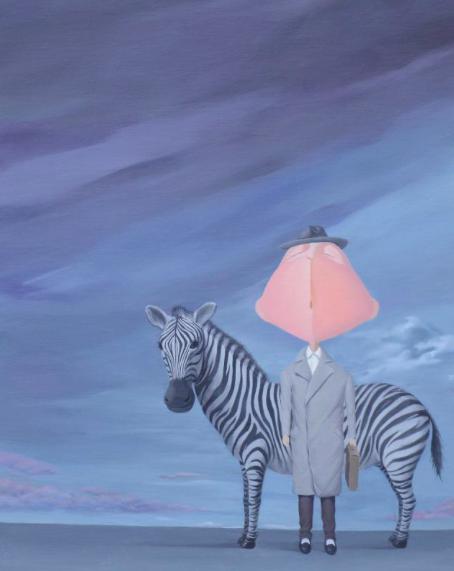
在这里(14)- 幻象,It is Simply an Illusion, 2015, oil on canvas, 102 x 80 cm

在这里(14)- 幻象,It is Simply an Illusion, 2015, oil on canvas, 102 x 80 cm
At the end of 2006,
Wu Qiong’s artistic style evolved significantly, transitioning from his
self-deprecatory, dark and gloomy foundations riddled with black humor to an
exploration of the unique emblems and symbols that characterized the Chinese
nation. His Made in China series symbolized a maturing of Wu Qiong’s work
compared to his earlier creations. A desolate landscape gives rise to a group
of adorable children whose faces bear expressions of nonchalance and obsession,
once again referencing the hesitation that people possess towards life. Through
the process of deciphering Wu Qiong’s work, he used the portrayal of a group of
children who are underdeveloped and at times carry dolls in patches of clothes,
to convey the message of “Made in China 2.” In the left corner of the canvas, a
young boy is in the process of yawning. His head is large and his body is
positioned towards the rear. Both eyes are closed and he seems to be in a
posture of sleep and caught up in a dream. His little mouth is opened wide and
full of admiration and reverence. Clothed fully in Manchu apparel, this could
be a reference to the painter’s own Manchu heritage. In the artist’s 2007
narrative series titled Born After the
80s, one can identify familiar motifs that were present in the Made in China series of works, such as
the silhouettes of big-headed dolls which are bestowed with new meaning. In
these works, Wu Qiong cements the current four themes of his artistic
portraits. There is a concerted effort to portray children in the midst of
clouds, carefree and ignorant children, mischievous children and boys and girls
together. The cryptic and ambiguous faces of the works in his Made in China series, begin to be
clearly imbued with vitality.
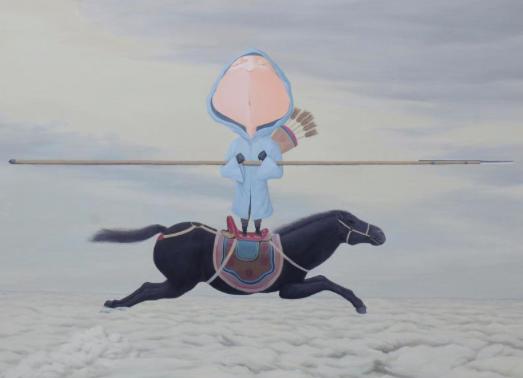
在这里(6)- 武侠浮云, Divine Warrior, 2015, oil on canvas, 110 x 150 cm

在这里(6)- 武侠浮云, Divine Warrior, 2015, oil on canvas, 110 x 150 cm
In his Born
After the 80s series of works, Wu Qiong utilizes new methods of portrayal,
placing the main character at the forefront of the painting with the echoes of
a group of repeated faces in the background. Taking a work such as Pulling on a Spinning Top for example,
the child that is spinning tops with the other children has an expression of
reverence on his face. In the piece Big
Symphony, the leader of the band of singing boys is also portrayed in this
method. At the same time, through the attention to detail, Wu Qiong also uses
the composition to achieve startling results. With reference to the piece Playing with Marbles, a few strands of
hair prevent the children from being completely bald.

在这里,Here and Now, 2015, print, 70 x 57 cm
The use and portrayal of child-like images in
contemporary Chinese art is not an unfamiliar sight. Take, for example, the
work of painter Yu Chen (born in 1963) and his Red Children creations. They don clothes that belong to the era of
Mao Zedong, with a myriad of expressions. There is also Tang Zhi Gang (born in
1959) who portrays children in his artwork Meeting
of the Children. Yu Chen chose to make children the main focus of her
paintings due to the notion that as an adult, she could not effectively enter
into an exchange with her thoughts. As such, she held the hope that all people
of the world would continue to remain as children. A demobilized soldier, Tang
Zhi Gang chose children as a focal point to escape the themes that contemporary
art tended to pursue relentlessly – it served as a critique of the absurdity of
living under the political system, thus injecting a sense of humor into his
work.
With regards to Wu Qiong, “children” represent the carefree and innocent memories that he has of his early years. The children are entrusted with these reflections, they are fully immersed in a cacophony of noise and amusement from a bevy of traditional toys and games; they can also wander unrestrained in the realms of their fantasies. If, on a certain morning, Wu Qiong awakes and the era of his childhood and all that has transpired is forgotten and condemned to the corners of his mind as pure delusion; he will be able to be refreshed once again. Leaping from skyscrapers and fleeing from danger are themes that manifest in Wu Qiong’s latest works titled Ensconced in Clouds and Flying. In these pieces, little heroes are released from the bind of gravity and float peacefully amidst clouds and an azure blue sky. In the vein of emotion that is evoked by the poetic line, “the moon reflects the light of home,” so too does the work of Wu Qiong lament, “the sky reflects the blue of childhood.”
Tan Hwee Koon is an art advisor, publisher and writer based in Singapore.
The original article in Mandarin is available here.
With regards to Wu Qiong, “children” represent the carefree and innocent memories that he has of his early years. The children are entrusted with these reflections, they are fully immersed in a cacophony of noise and amusement from a bevy of traditional toys and games; they can also wander unrestrained in the realms of their fantasies. If, on a certain morning, Wu Qiong awakes and the era of his childhood and all that has transpired is forgotten and condemned to the corners of his mind as pure delusion; he will be able to be refreshed once again. Leaping from skyscrapers and fleeing from danger are themes that manifest in Wu Qiong’s latest works titled Ensconced in Clouds and Flying. In these pieces, little heroes are released from the bind of gravity and float peacefully amidst clouds and an azure blue sky. In the vein of emotion that is evoked by the poetic line, “the moon reflects the light of home,” so too does the work of Wu Qiong lament, “the sky reflects the blue of childhood.”
Tan Hwee Koon is an art advisor, publisher and writer based in Singapore.
The original article in Mandarin is available here.


